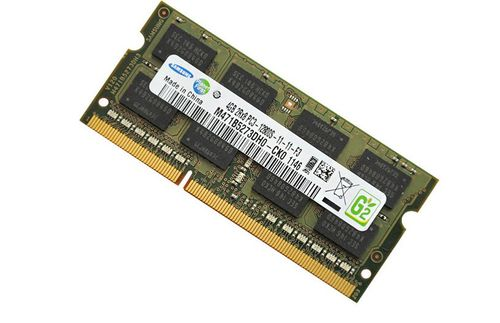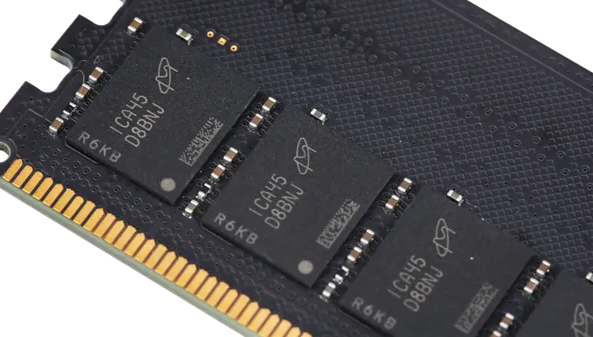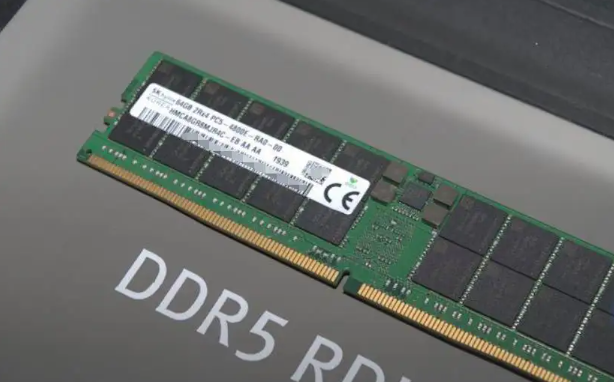DDR5 is a computer memory specification. Compared with DDR4 memory, the DDR5 standard has higher performance and lower power consumption. Other changes include reducing the voltage from 1.2V to 1.1V, while 32/40 bits per channel (ECC), improving bus efficiency, and increasing the number of prefetched Bank Groups to improve performance.
catalogue
-
1. Main characteristics of DDR5
-
2. The difference between DDR5 and DDR4
-
3. Development history of DDR5
1. Main characteristics of DDR5
- Equivalent frequency boost
The increase in the equivalent frequency that everyone can feel most directly increases from "2133MHz" to "4800MHz". With the deepening of the current DDR5 memory parameter adjustment, 6400MHz may become the mainstream level.
The increase in frequency has improved the theoretical running score of DDR5 memory. In terms of read test, write test, or replication and delay, the score has improved greatly.
- DRAM capacity improvement
The DRAM capacity of the memory is also the key direction for the improvement of DDR5 memory technology. In the JEDEC DDR4 specification, the maximum capacity of a single memory Die is only 16Gb, and in the DDR5 era, the capacity of a single Die has reached a height of 64Gb.
- lower operating voltage
The working voltage of DDR5 memory is as low as 1.1V. Compared with the minimum working voltage of DDR4 of 1.2V, it has achieved a reduction of about 20%. Its reduction has two important meanings.
One is power consumption, especially for notebook products and enterprise-level server products, a 20% reduction in power consumption has significant energy-saving significance; the other is the overclocking potential, which reduces the starting voltage, making subsequent overclocking possible. The parameter adjustment has a larger operational space, which can further enhance the overclocking potential of the memory.
- On-die ECC
The ECC error correction mechanism is introduced to avoid risks, improve reliability and reduce defect rates.
- Dual 32-bit addressing channels
The basic principle of the introduction of dual 32-bit addressing channels is to divide the internal 64-bit data bandwidth of the DDR5 memory module into two addressable channels with a bandwidth of 32 bits respectively, thereby effectively improving the memory controller and data processing. Access efficiency while reducing latency.

2. The difference between DDR5 and DDR4
Cadence says the improved DDR5 capabilities will increase actual bandwidth by 36% compared to DDR4, even starting at 3200 MT/s (this claim must be tested) and 4800 MT/s speeds, compared to DDR4-3200 would be 87% higher. At the same time, one of the most important features of DDR5 will be the monolithic die density of over 16 Gb.

3. DDR5 development history
In June 2017, JEDEC, the organization responsible for computer memory technology standards, announced that the next-generation memory standard, DDR5, will be unveiled, and is expected to complete the final standard formulation in 2018.
On September 22, 2017, Rambus announced a fully functional DDR5 DIMM chip in the lab, with mass production expected to begin in 2019.
In October 2018, Cadence and Micron announced their own DDR5 memory research and development progress. The two manufacturers have begun to develop 16GB DDR5 products and plan to achieve mass production targets by the end of 2019.
In July 2020, the JEDEC Association officially announced the DDR5 standard, which starts at 4800MHz and can reach 6400MHz in the future.
In October 2020, South Korean storage giant SK Hynix announced the official release of the world's first DDR5 memory.
In January 2021, Jiahe Jinwei took the lead in laying out DDR5 memory modules.
In February 2021, Asgart released its first DDR5.
On April 26, 2021, Jiahe Jinwei's first batch of DDR5 memory modules rolled off the production line.
In December 2021, SK hynix announced to provide samples of 24Gb DDR5 with the largest single-chip DRAM capacity in the industry.




